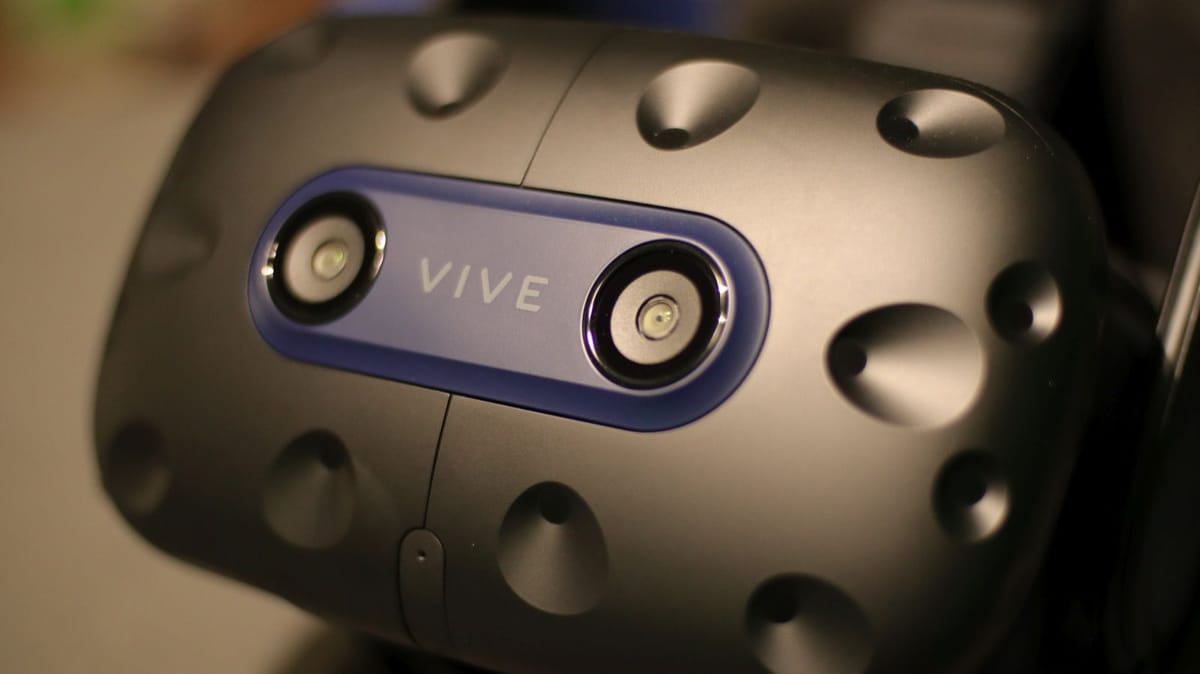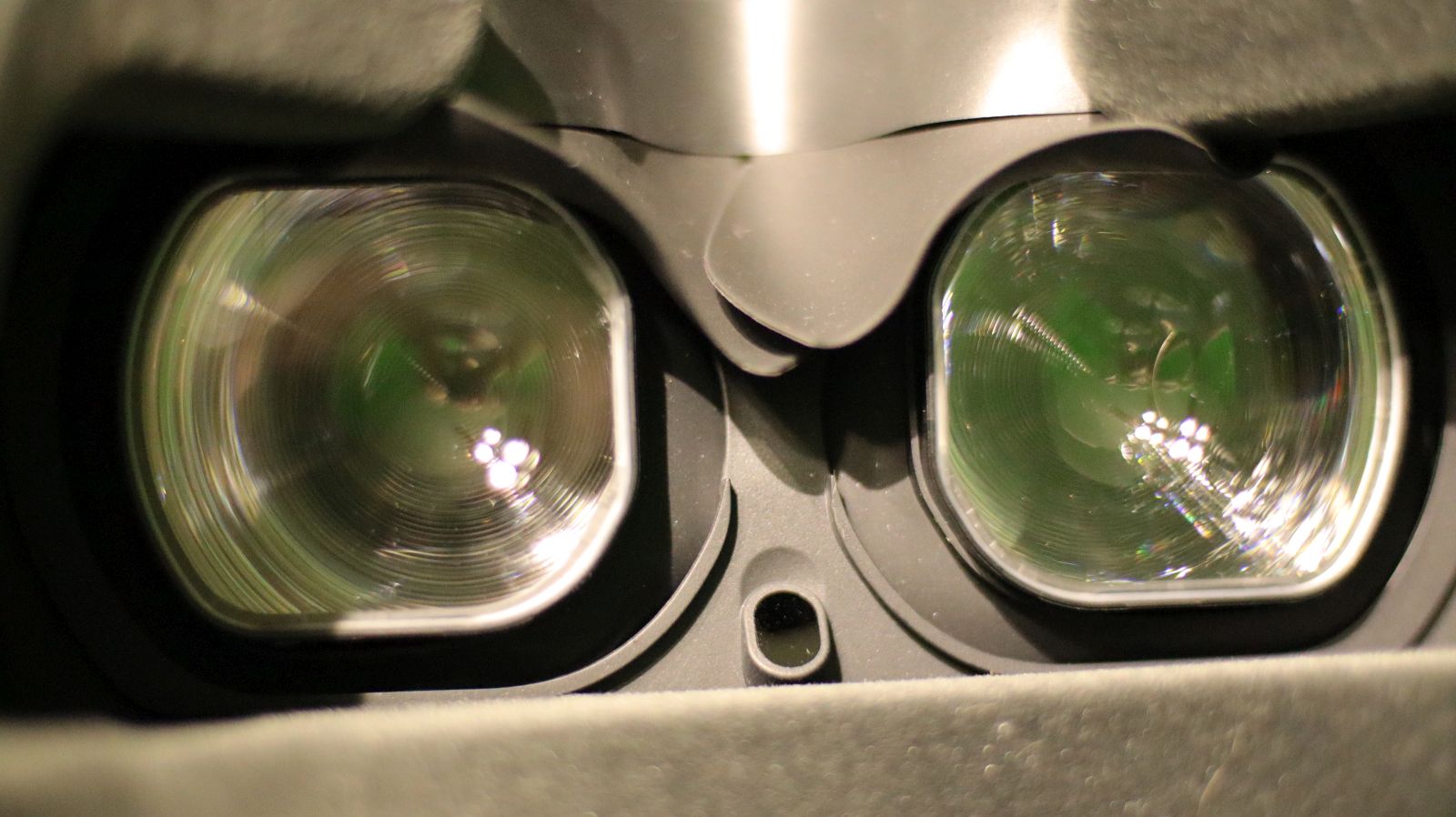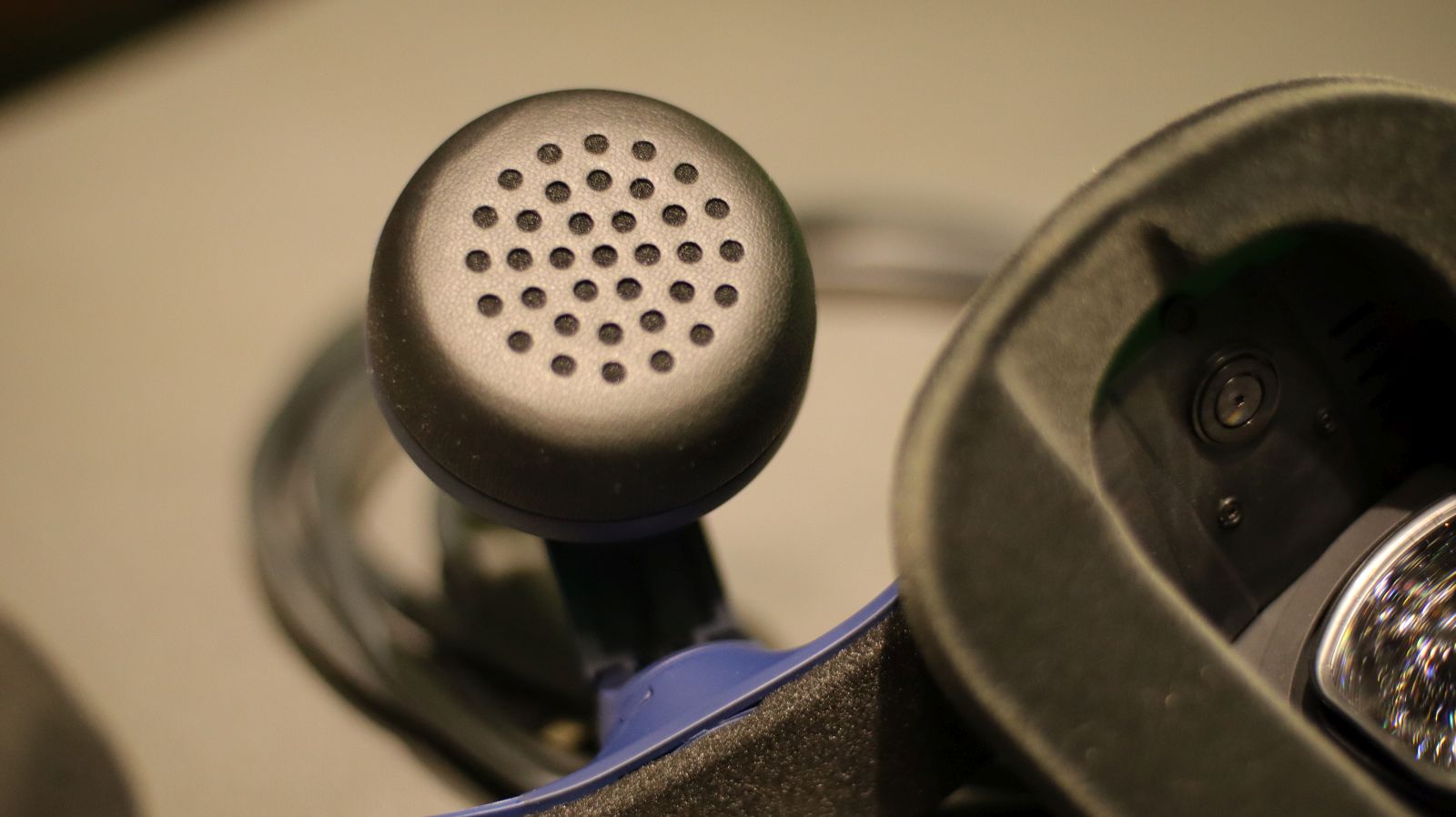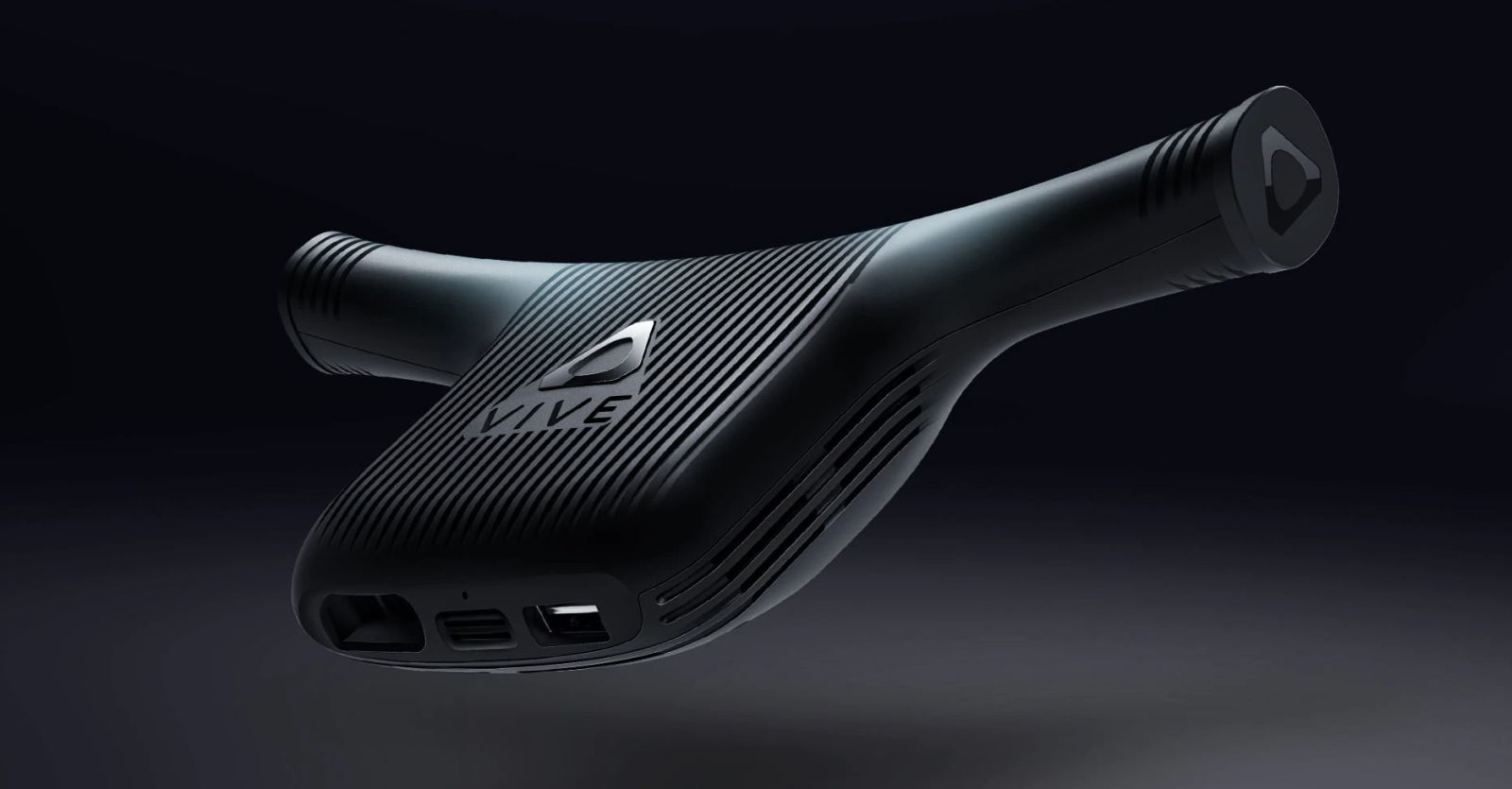
I’ve taken my time with this review because I didn’t want to be first, I wanted to be right. I’ve had just about every major VR headset since the growing pains of blurry dev kits to the halcyon days of high-framerate visual fidelity. Some have wowed me, some have made it hard to justify an upgrade. So where does the Vive Pro 2 fit into all of this? Let’s start with a breakdown of the hardware before we get into the experience.
A follow-up to the 2018 Vive Pro, the Vive Pro 2 is easily confused for its predecessor. On the outside, there are few changes. Team Vive stuck with what worked, integrating the hard banded deluxe audio kit directly into the product. But like all of us, it’s what’s inside that counts, right? We need to talk about the internals.
First and foremost, the original Vive Pro has PenTile OLED panels with a resolution of 1440×1600 for each eye — a combined 2880×1600 at 615 ppi. This was a 78% increase over the original Vive. Now, the Vive Pro 2 looks to repeat that feat, pushing up to 2448×2448 per eye — a total of 4896×4896, better known as 5K resolution. It does this with a fast switching LCD IPS panel. Where does that extra resolution put it against its contemporaries? In terms of pure resolution, it handily beats their own Vive Cosmos, the HP Reverb G2, and even the recently released Oculus Quest 2. In fact, only the $900 Pixmax 8K and the $5800 Varjo VR-3 come anywhere even close, though their 80 and 90 Hz refresh rates and lower FOV for both make a direct comparison problematic.
Now, you’ve probably noticed that the new Vive Pro 2 looks nearly identical to its predecessor, and that was done on purpose. The original Vive Pro was very comfortable with its solid band construction, so why fix what isn’t broken? That isn’t to say that there aren’t any changes (beyond the lenses) though, with a refined and thankfully softer ear cup design.
For my review I’ll be exclusively focusing on the HMD itself as my box is essentially just the headset with the original Vive Pro’s components included to ensure I could tackle my review. Since I’m a religious user of VR, I’ve already got a great setup for my towers, so everything else goes back in the box. It does also mean I won’t be talking about the new controllers.
There are two areas that really stand out with the Vive Pro 2, and they are a matter of some debate — the 120Hz refresh rate, and the 120 degree field of view. To really dig into the field of view equation, let’s talk about the human eye for a brief moment. The eye doesn’t actually have a very wide field of view, seeing just a few degrees at a time. Where our gaze rests is the “precision area”, with other areas becoming blurry and low-precision. In fact, this “central vision” cone is around 60 degrees, with the last 35 degrees on both sides being less clear. Our combined field of view is around 130-135 degrees vertically (again, with the center 60 degrees being most clear, and the upper (30 degrees) and lower peripheral (40-45 degrees) being blurry), and the combination of both eyes (aka “Binocular vision”) being around 200 degrees. The brain stitches both eye inputs together to create the illusion of a wide angle of view from our two “lenses”. So it goes with the Vive Pro 2.
To create the 120 degree field of view, HTC employed a new dual-stack lens design, meaning there are two lenses on each side stacked on top of one another to create a super-wide FOV. Rather than using a traditional fresnel lens, which has a darkening effect at the edges, the dual-stack lenses combine their two focal lengths to create a new wider final image. By placing the first lens at a very close focal plane, and the second lens at the previous length, the multifocal view should reduce eye strain, headaches, and nausea, as well as providing a wider view to bring worlds to life. Given that I suffer from all of those things, I was eager to see if that was the case.
Before I put my face into this HMD for any length of time, I took my inter-pupillary distance number (the distance between the center of your pupils), and dialed in my number. I cannot stress this enough — take the time to do this as it’ll make your experience far more smooth. The Vive Pro 2 has an IPD adjustment between 57 to 70.5mm, which you can dial in with a knob on the bottom right of the headset.
One thing you’ll have to get used to is a change in the lens shape. The lenses have gone from a circular shape to a round-edged square shape. Does this have any meaningful impact? None whatsoever, but coming from the Vive Pro 2, my eye latched onto it immediately for the first few times I used the HMD. After a few weeks of use, it feels on par with what we see with the Valve Index in terms of Horizontal FOV, and that’s nothing to sneeze at.
I bumped into a hardware issue during my review with this pre-production unit. Doing a little bit of research, I found that others are suffering the same, so it seems like an issue Vive will have to address. The rear headband adjustment knob will not stay put. I’m not trying to crank it down too hard, but it simply will not hold its ratcheted position. It’s problematic in games where there is a lot of movement. Hopefully this is something addressed as more units end up in the field and not a systemic problem.
I do want to point out that the Vive Pro 2 is easily, and by a very wide margin, the clearest headset I’ve ever used. The Reverb G2, the Pixmax 8K, the Quest 2, the Index, the Cosmos, the Oculus Rift — none of them even hold a candle to this. My complaint, however, is the black levels. As this device shifts to OLED, we see less saturated blacks than you would on a traditional LCD. That said, there’s no denying that the colors on the Vive Pro 2 are absolutely amazing. The screen door effect is almost completely eliminated, and not having fresnel lenses means far less streaking and “god ray” effects. The concentric circles that you can see on the Vive Pro are eliminated by the Vive Pro 2.
Edge to edge quality is a big point of contention with other headsets, especially when it comes to reading text. Games with menus like The Elder Scrolls V: Skyrim VR are miserable on VR HMDs without solid edge clarity. Here, you can read the HUD in the corners without eye strain. Anything to reduce pressure on the eyes leads to a better VR experience, and longer times in the virtual world.
There is one area where the new stacked lens approach had a negative effect — super dark games like Beat Saber and Karnage Chronicles. These games plunge you into darkness frequently, and in the case of Beat Saber, there is a huge contrast between this darkness and the neon-soaked objects flying at your head. The edges on these objects tend to be slightly blurry or fuzzy. It’s not a showstopper by any stretch, but it is noticeable.
The big question is, of course, 120Hz. I’ve tried the Vive Pro 2 on a variety of cards ranging from the RTX 3060 Ti, all the way up to the freshly-released GeForce RTX 3080 Ti, and with varied results. The 3060 Ti managed to deliver just over 100 frames per second in almost all games I tested, including Half-Life: Alyx. That said, it did have to reach into the well for some Asynchronous Spacewarp. ASW, better known as synthesized frames, is where the game has to detect the previous rendered frame to put together a predicted frame when the card struggles to keep up. It’s an approximation, so it’s never as clear as a rendered frame, but it can prevent framerate loss. In the case of the 3060 Ti, I saw upwards of 20% of ASW frames in the mix, even at 102 frames per second. That said, at the other end of the spectrum lies the 3080 and 3080 Ti. Those cards were able to deliver over 140 and 160 frames in Alyx without a single synthesized or dropped frame. To say that it’s buttery smooth is an understatement, and that’s before it gets anything like DLSS. Never underestimate raw power.
There is one game that will really put the screws to just about any hardware you have, and that’s Hellblade: Senua’s Sacrifice. It’s a magnificent game full to bursting with detail, and on a 3060 Ti you are gonna struggle to maintain roughly 70fps on average. Pushing up the ladder to the 3070 and 3070 Ti we see that jump up to the 90s range. The 3080 and 3080 Ti both see the framerate climb to 105 and 112 frames respectively and without any compromise. What that also means, however, is that we are shy of the 120Hz full rate capability of the HMD, even on the most powerful cards on the market. Given that the recommended specs for the Vive Pro 2 to hit 5K resolution and 120Hz is a 2060, it seems like the Vive team may be overselling the capabilities of that card. We need DLSS, and we need it soon if we want to see full rate on the Vive Pro 2 in the most demanding games.
My favorite VR experience to date is Elite Dangerous, and I can hardly express how having the ultrawide POV in space is a game changer. It means being able to glance at my side panels, though obviously anything outside the center is less clear, just like your real eyeballs. The canopy on the ship is fully visible and it feels even more immersive. Now if we can just get Pirana Games to deliver on VR support for MechWarrior 5: Mercenaries…
I do have one axe to grind with the Vive Pro 2 that is frankly inexcusable — the microphone. On a $800 headset I would expect something that doesn’t sound tinny and hollow. Unfortunately that’s where we’re at on the Vive Pro 2. It’s truthfully not any worse than its predecessor, but I was hoping for at least a modicum of improvement.
I don’t wear glasses, so I can’t speak to how these perform with your own eye pieces. As you can press a button and adjust the faceplate in and out, it should accommodate the extra distance needed for prescription glasses. I know that with the original Vive Pro you could get prescription lenses for the unit itself, swapping out the eye pieces for one that matches your needs. I have no doubt that over time we’ll see the same here, though I do wonder about performance with the dual-lens approach this time around.
Looking at Vive’s commercial product, the Vive Focus 3, there is a design element I wish had carried over — heat dissipation. The original Vive, the Cosmos, and the Vive Pro are all front-heavy and get hotter than you might like on your face over time. The Vive Pro 2 carries on with this tradition rather than adopting the heat sink / fan combination present in the Focus 3. The tiny slot in the top of the Focus 3 would have helped as well. VR experiences are getting more involved, and players are spending more time in virtual reality. That’s tough when your face brick is hot as well as heavy.
There’s absolutely no way to reasonably demonstrate just how phenomenal 5K gaming looks. The change in lenses brings both good and bad, but truthfully if you aren’t putting it head to head against another HMD it’s unlikely you’ll notice those steps backwards. That said, what you will notice is that incredible FOV and 5K resolution, and when coupled with the 120Hz refresh rate it makes the Vive Pro 2 a step in the right direction. Now we just need the hardware to run it at full rate, or DLSS to give a helping hand, and we’ll be in a golden age. Or we will, when Vive fixes that microphone.
HTC Vive Pro 2
Great
An incremental step from the Vive Pro, the Vive Pro 2 delivers on its 5K/120Hz promise. The new lens design delivers better quality and field of view, though black saturation underperforms. The microphone is a travesty, but once you see games like Elite Dangerous on this headset, there’s simply no going back.
Pros
- 5K resolution looks gorgeous
- 120 degree FOV with edge-to-edge clarity
- 120Hz is buttery smooth
- Comfortable solid headband
- Zero customer data harvesting
Cons
- Dual stack lenses underperform in black saturation
- Same weight, same heat
- Time to upgrade the microphone
- This unit has an adjustment ratchet problem




